Earth is home to frogs, with the exception of Antarctica. Because they can swim, they choose environments that have both dry land and lots of water or humidity. Although they spend a lot of time in the water, frogs breathe underwater through their lungs when on dry land.
How can frogs breathe underwater without gills because they breathe through their lungs?
When submerged, frogs breathe via their skin. Even while they are on land, their skin must always be moist in order for them to absorb oxygen. If the oxygen levels are appropriate, they can stay in the water for extended periods of time, even during hibernation. Since they have gills as tadpoles, frogs spend the majority of their early life underwater.
Frogs Breathe Underwater Through Their Skin
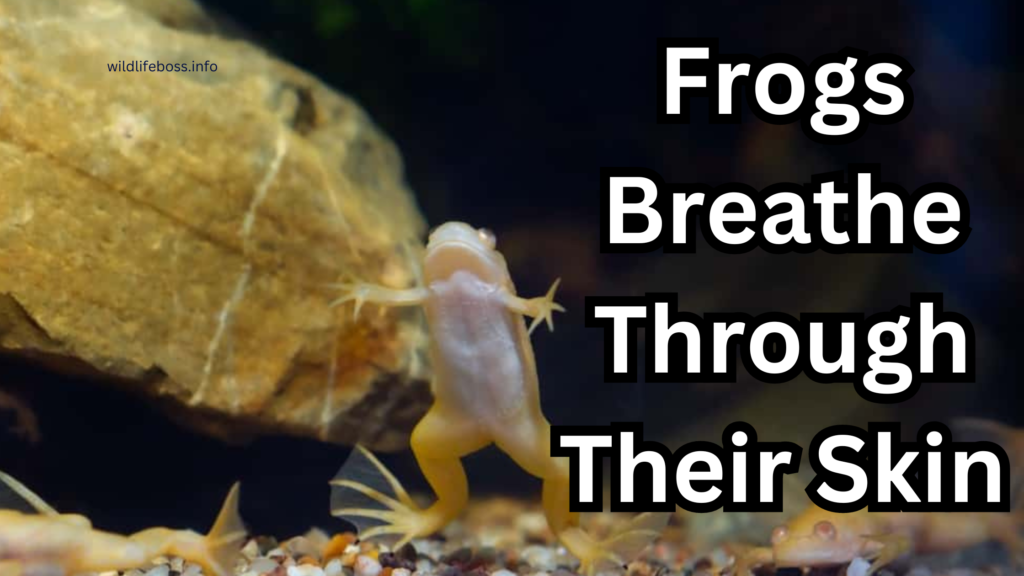
Since all frogs are amphibians, they can exist on land but also require a moist environment to do so. This is due to the fact that frogs breathe underwater both through their skin and their lungs.
The words “cutaneous gas exchanges” and “cutaneous oxygenation” describe breathing through the skin.
It needs a thin, sometimes extremely sensitive epidermis (the outer layer of skin) in frogs. While excessive wind burn out their skin, excessive sun exposure damages skin cells.
Living close to the water enables them to maintain the ideal moisture balance needed for their bodies to operate as intended.
Not Every Frog Lives in Water:
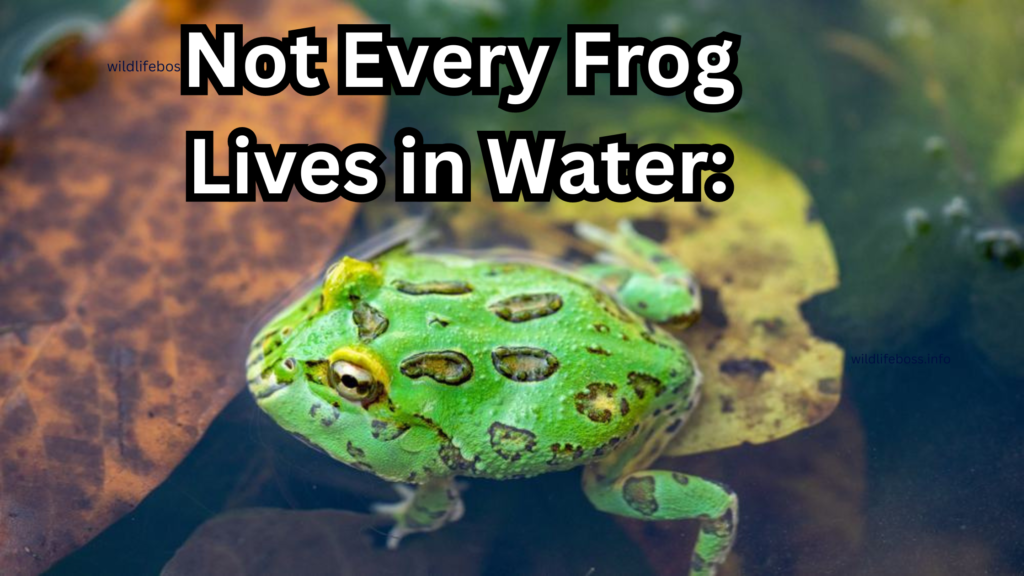
Not all frogs, of course, live in ponds and rivers. Terrestrial frogs come in various species, including tree frogs.
Most tree frogs have poor swimming abilities. Instead, they have distinct toe pads and toe bones that resemble claws. Some even have unique bone structures or additional bones in their toes.
Tree frogs use these characteristics to help them climb on branches, leaves, and trees. These terrestrial frogs still require moisture to stay on their skin even if they spend more of their time on land.
They will stay near water sources when possible, although in rainforests, the humidity helps to keep them moist.
Certain species even secrete a waxy material from their skin, such as the waxy monkey frog. To prevent its skin from drying out, they spread the wax all over its body with their legs.
How Much Time Do Frogs Spend Underwater?
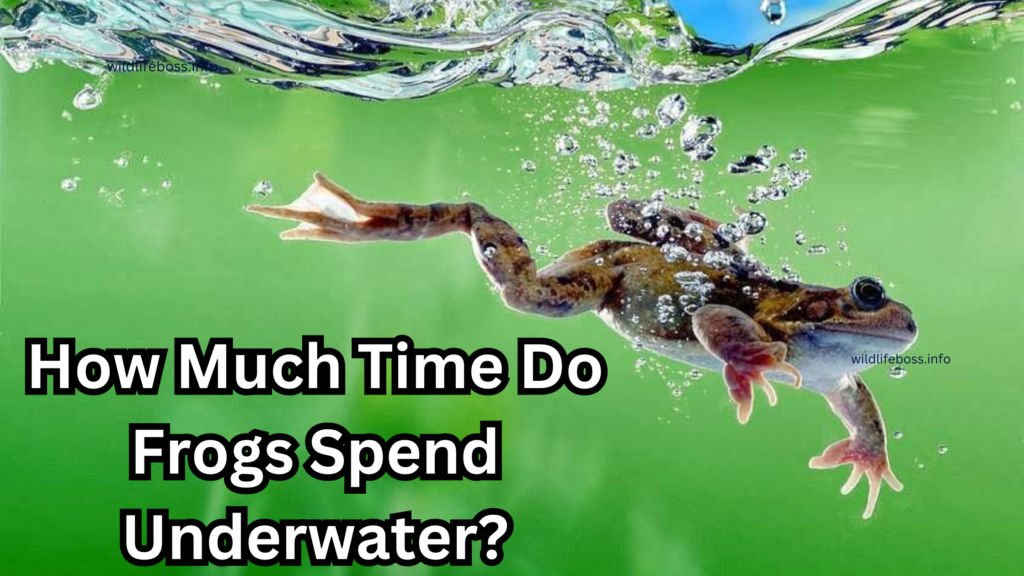
Frogs can only stay underwater for a certain amount of time, despite the fact that their skin permits to frogs breathe underwater. A certain amount of gas exchange is handled by their skin.
In addition, the atmosphere must initially have a sufficient amount of oxygen.
The skin of most species of frogs is the organ that eliminates carbon dioxide from the body. The majority of oxygen intake frequently goes into the lungs. Frogs must breathe in via their lungs before going underwater for extended lengths of time.
They can then hold their breath and absorb oxygen from the water through their skin at the same time. However, the precise amount of time a frogs breathe underwater before emerging to breathe is unknown.
It’s a widely held belief that frogs can submerge themselves for four to seven hours. Nevertheless, there isn’t any hard evidence to support this.
Frogs may be able to submerge themselves for an extended period of time if the water contains enough oxygen for them to absorb.
But it’s not just the oxygen content that causes a frog to break the surface; there are other elements as well. In order to find food, mate, and escape from predators, frogs must also surface. Hibernation is an exception to this rule.
Sea also: How Do Hippos Breathe Underwater? (The Accurate Answer)
Hibernation of Frogs Underwater
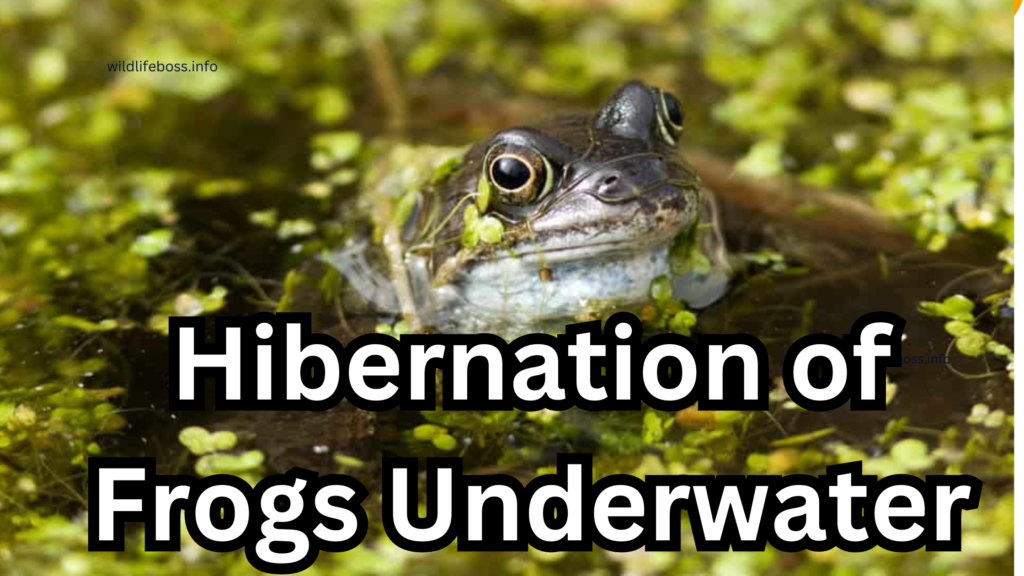
Frogs depend on outside variables to control their body temperature because they are cold-blooded creatures.
If they were unable to hibernate, the harsh winters could prove fatal for them. An animal’s metabolism slows down during hibernation.
If not for abrupt temperature fluctuations, frogs would go without food and energy. They lower their energy requirements by hibernating, which lowers their oxygen requirements as well.
They still require more oxygen, though, than other aquatic creatures such as turtles. While some turtles hibernate by burrowing in the mud, this would reveal too much of a frog’s skin.
The majority of frogs sit on top of the mud because by their skin frogs breathe underwater. They won’t burrow all the way down, but they might bury some of their remains.
Frogs really occasionally swim during hibernation to make sure their oxygen levels stay stable and frogs breathe underwater.
But what about frogs like tree frogs, which are even less aquatic? These species will seek for cracks in rocks and trees to sleep in, or they will burrow beneath the leaves.
It might not look like much protection from the cold, and it isn’t in reality. Frogs replenish their burrows with blood containing large amounts of glucose.
As the rest of their body freezes, this functions as an antifreeze to prevent their important organs from freezing.
Antifreeze and slower metabolisms cause the frogs’ hearts to stop beating and their respiration to stop completely but frogs breathe underwater. The frogs’ metabolism then increases once more when the weather warms.
Can Frogs Drown?
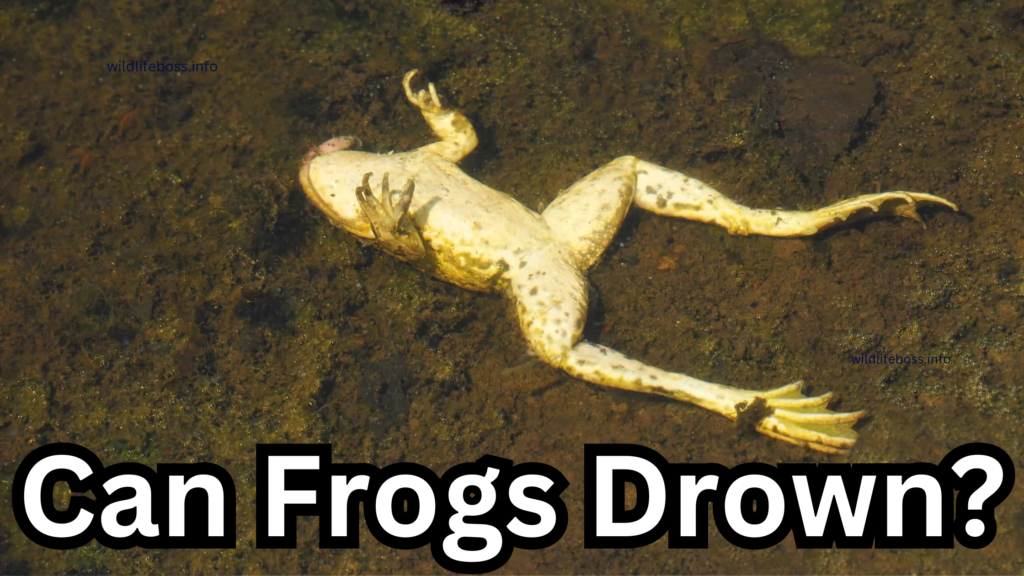
Even though frogs are amphibious, they can still drown. Like mammals, they have lungs, but water cannot enter or stay in the lungs. They can only take in so much air by skin breathing.
A frog may drown if its lungs filled with water and there wasn’t enough oxygen in the air.
This is particularly likely to happen in artificial water features like home ponds. Frogs, especially froglets in their early stages, may find it challenging to exit the water if the banks have too steep edges.
Their cutaneous respiration will eventually become ineffective as their bodies eventually absorb all of the oxygen from the water and frogs breathe underwater. They will drown, just like a human would, if they are unable to escape the water because there is insufficient oxygen in it.
Baby Frogs Have Gills
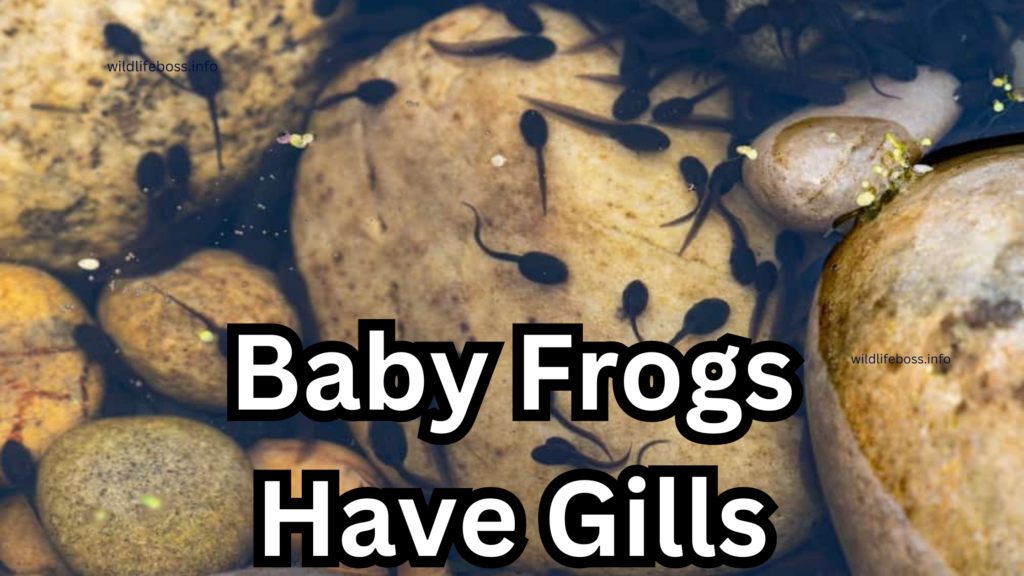
We frequently associate having gills frogs breathe underwater. Frogs are born with gills, even though they do not have them as adults.
Frogs are first laid as eggs; some species, such as bullfrogs, have the capacity to lay up to 20,000 eggs at a time.
Subsequently, the eggs develop into pollywogs, or tadpoles. At this stage, tadpoles are round-headed, tiny animals with long tails; they lack limbs and legs.
Though most species spend their whole tadpole life in the water, they do have gills.
These gills start to recede as they reach the froglet or juvenile frog stage. At this point, the development of their lungs begins. As such, until they reach adulthood, they can start spending longer periods of time outside of the water.
conclusion
Frogs are incredibly versatile creatures that inhabit a variety of environments worldwide. Frogs breathe underwater by two separate ways: through their skin and through their lungs.
Because of their skin’s ability to absorb oxygen from the surrounding water, and ablity frogs breathe underwater. Nonetheless, the water’s oxygen content needs to be sufficient.
They expel carbon dioxide as they breathe in oxygen, and eventually the oxygen concentration will drop too low for skin breathing. Frogs must use their lungs to breathe while swimming to a new location or heading to land.
Frogs use their gills to breathe while they are tadpoles, but as they get older, their gills retreat and are replaced by their lungs and skin.
They can travel over land and water because to their dual breathing system, but there is a cost. For a frogs breathe underwater correctly, its skin has to stay moist. Frogs therefore require surroundings with sufficient water sources or humidity.

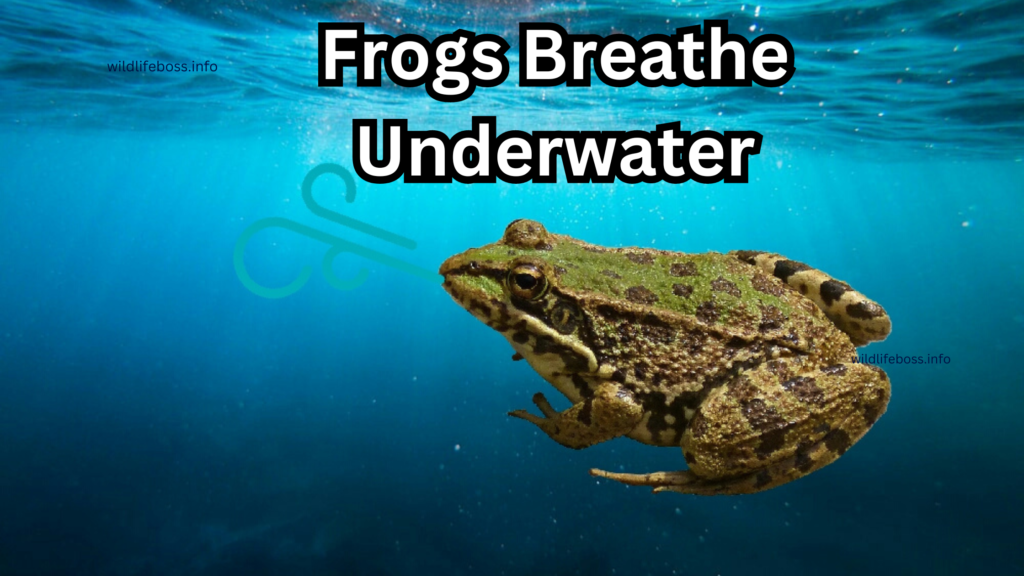
Pingback: How Do Hippos Breathe Underwater? (The Accurate Answer) - Wildlifeboss.info